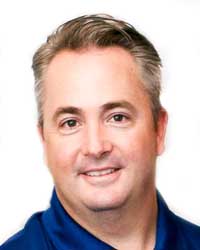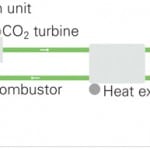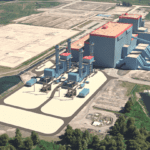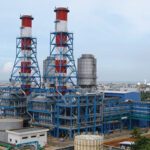Bill Newsom—vice president, sales & marketing, Mitsubishi Power Systems Americas Inc.—talks about taking the long view with the company’s U.S. investments.

Mitsubishi serves the Western Hemisphere with “versatile power generation technologies, performance-defining innovations, and responsive service capabilities” across all the generation technologies.
Peltier: What innovations in the company’s 2011 product line should we expect?
Newsom: Mitsubishi continues to develop industry-leading technologies to support the power generation market. These technologies make up our broad product portfolio that includes nuclear power, renewable energy, as well as hydrocarbon-based generation. For the next decade, our product line focuses on sustainable power generation, emphasizing the lowest environmental impact possible. Our new J-Series combustion turbines in combined-cycle mode when firing natural gas will reach a net efficiency in excess of 61%. This product is the backbone of our sustainability approach to the power market with considerable reduction of CO2 emissions as well as drastic reductions in energy discharge to traditional heat sinks such as lakes and rivers. Larger size and higher-efficiency wind turbines and concentrated solar power are also being offered and complemented with lithium ion battery energy-storing capabilities to compensate periods when renewable generation is not available.
Mitsubishi continues to advance combustion turbine technology with our recent announcement that in February 2011 we will begin operation of the 60-Hz “J-Series” turbine at our in-house combined-cycle validation plant (T-Point) in our Japan-based Takasago Machinery Works. This new gas turbine features the world’s largest power generation capacity and highest thermal efficiency in the 1,600C turbine inlet temperature class. T-Point provides a unique advantage to Mitsubishi, allowing us to test and prove new gas and steam turbine technologies prior to them entering the commercial market. T-Point had previously conducted verification testing and commercial operation of our G-Series combustion turbines for more than 13 years. The original M501G unit was removed in mid-November and is being replaced with the M501J. The 60-Hz model will produce about 320 MW in simple-cycle mode and 460 MW in a combined cycle. A combined-cycle plant built around the new J-Series gas turbine will produce CO2 emissions approximately 50% lower than conventional coal-fired power generation.
This past October, we completed the 140,000-square-foot first phase of our new $325 million/500,000-square-foot Savannah Machinery Works that produces combustion system components for our gas turbines located around the world, with more than half of the parts produced exported back to Japan. The second phase of the construction project, which will add an additional 72,000 square feet of production space to the site, will feature extensive capability to support turbine rotor services, rotor balancing, valve, and other large component repairs as well as upgrades for gas and steam turbines. The third and final phase will add a facility to manufacture and assemble the next generation of high-efficiency, low-emission gas turbines.
We are additionally building a new wind turbine manufacturing plant located in Arkansas that will fabricate turbine nacelles. The plant, with an initial annual production capacity of 600 MW (250 units of our 2.4 MW wind turbine) is expected to begin operation in the second half of 2011. Since delivering its first wind turbine in 1980, Mitsubishi has established itself as Japan’s largest wind turbine manufacturer. To date, we have delivered more than 3,500 units to the U.S. market. Vientek, a joint venture between Mitsubishi and TPI Composites, operates two wind blade manufacturing plants in Mexico and has produced more than 5,000 wind turbine blades to date.
Peltier: The global economic and financial crisis that reduced power demand and tightened credit caused markets for large power generation equipment to hit rock bottom. How did your company fare?
Newsom: This has been tough market situation for power generation equipment manufacturers; but during this time Mitsubishi elected to invest in the U.S. infrastructure, which creates new jobs and facilities to increase our local support as well as offset currency risk. In the long term, nuclear power offers a well-known alternative to reduce CO2 generation; however, in the shorter term, numerous old coal generation facilities need to be replaced with high-efficiency combined cycles firing natural gas. Offshore wind is getting a lot of attention in Europe while carbon capture and sequestration is still under development and will probably take several years to reach economic viability.
The biggest road block is financial and regulatory uncertainty. The U.S. electricity demand will rebound in this coming decade. The renewed appetite for power, together with environmental considerations, will induce a large number of projects needed to modernize the existing generation capacity. Mitsubishi is heavily investing in manufacturing and assembly capabilities in the U.S. to favorably position itself for this expected rebound in project development and execution. These investments started roughly 10 years ago, and Mitsubishi has invested almost $600 million to increase our U.S.-based manufacturing footprint.
Peltier: How have recent lower gas prices affected your company’s sales today, and what are your plans should the price of natural gas rise?
Newsom: The low natural gas prices and reduced volatility combined with the relatively lower total cost of ownership and product maturity of gas-fired generation have triggered numerous negotiations for near-term combined-cycle installations. It is unknown how the price will change in the next decade; however, the potential definition of carbon tax could certainly induce considerable shifts in the cost of generation, reducing the effect of the natural gas prices. Given the current uncertain market conditions, it appears that in the next 10 years the most prevalent new-build solution will be natural gas–fired combined cycles.
Peltier: What is your company’s perspective on the China and India markets?
Newsom: Most OEMs have partnerships with Chinese and Indian domestic manufacturing companies, and therefore the revenues are shared to some extent. In the long term, as the indigenous companies develop new technology, that revenue sharing will be considerably reduced and eventually will disappear. China’s and India’s relatively new power generation manufacturing capability is predominantly supplied for domestic customers, and it remains to be seen if the U.S. and European market will accept the lower-cost product without a proven track record of quality and reliability.
Peltier: What are some major barriers of doing business with governments or private entities in developing countries, and how do you deal with them?
Newsom: Mitsubishi is involved with technology transfers in several countries. Without those agreements, it would be very difficult to compete in their domestic markets, especially China and India, because of their remarkably lower manufacturing costs. As long as our company maintains a technological edge, this symbiotic arrangement can be sustained.
Peltier: What initiatives does your company have planned for the next 10 years related to the development of new or improved renewable energy technologies?
Newsom: We are developing and offering several products that will facilitate the energy shift from the current predominantly hydrocarbon supply to the more environmentally friendly renewable energy–consuming society. In addition to designing larger and more-efficient wind turbines, and reducing the cost to manufacture solar energy technology, Mitsubishi is dedicating considerable R&D resources to develop fuel cell combined cycles with high net efficiencies as well as energy-storing devices such as large-scale lithium ion battery banks.
Peltier: How are you attracting the next generation of engineers and technologists into the power industry?
Newsom: The next generation of engineers is not attracted to the traditional field of power generation. Instead, they are motivated to learn and apply diversified knowledge that goes beyond the traditional mechanical or electrical fields. This new breed of engineers is motivated by getting engaged in multidisciplinary activities that involve control, emissions, performance, material science, structural design, and many other subjects. Mitsubishi offers challenging positions that attract the talent needed to sustain our industry.
Peltier: What are your three key predictions for the power industry in 2011?
Newsom: Here are my three predictions for 2011:
- A large number of budgetary inquiries for potential development to go commercial in the second half of the coming decade.
- Replacement of existing coal-based generating capacity with high-efficiency and flexible natural gas combined cycles and renewable projects where the economics make sense.
- Demand will slowly rebound, and the U.S. government will not provide substantially more certainty on environmental regulations for CO2. This situation will push power generation companies to delay projects or make decisions based upon the most cost-effective and flexible generation option—predominantly natural gas–based combined cycles.
— Dr. Robert Peltier, PE, POWER’s editor-in-chief, conducted and edited this interview.










